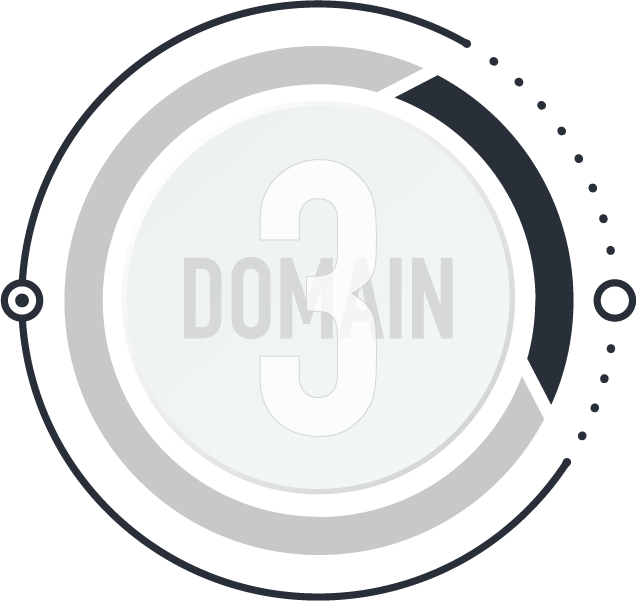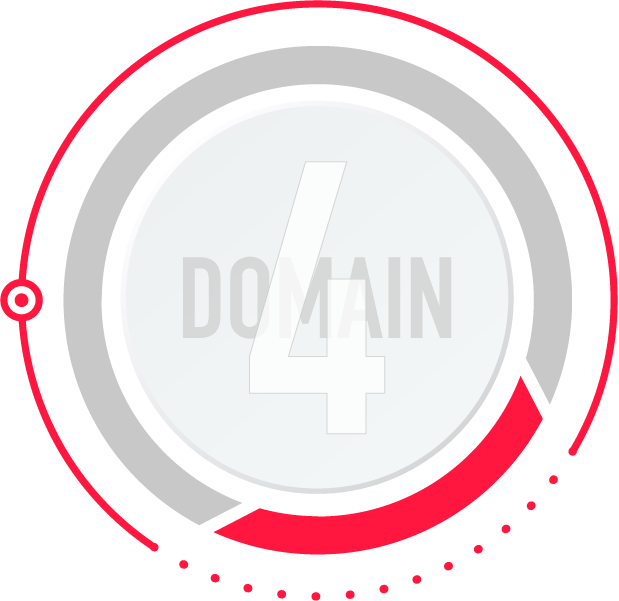Project.
Domains
DM1 includes WP1-WP3; DM2 includes WP4-WP6; DM3 includes WP7-WP8; and DM4 includes WP9-WP10.

Design, processing & joining of proof-of-concept materials

Preliminary performance assessment of proof-of-concept materials

Material performance assessment under reactor-relevant conditions

Management & societal outreach
Work Packages

WP1 – Processing of bulk proof-of-concept materials
WP1 aims at the radical performance enhancement of SiC/SiC composite ATF cladding materials by following an application-driven, multiscale material tailoring approach that targets certain material limitations, such as coolant (water, steam) compatibility & radiation swelling.
The approaches used to achieve the ambitious objectives of WP1 include grain boundary engineering, doping, and radical modification of the fibre/matrix interface to improve radiation tolerance and steam oxidation resistance.

WP2 – Deposition of proof-of-concept materials
WP2 aims at the development of protective outer coatings that can improve the compatibility of SiC/SiC composite ATF cladding materials with the coolant (water & steam) by preventing the formation of silica (SiO2).
The formation of SiO2 (main SiC oxidation product) is undesirable as its high solubility in water accounts for material losses under nominal operation conditions. Moreover, molten SiO2 reacts with SiC producing gaseous species and fast material degradation in steam (severe accident conditions).

WP3 – Joining of proof-of-concept materials & testing of joints
WP3 focuses on the joining of SiC/SiC composite ATF cladding materials and the mechanical testing of the produced joints, which will be online monitored by digital image correlation.
The joining approaches will be established on ‘reference’ SiC/SiC composite ATF claddings made wither by chemical vapour infiltration (CVI) or liquid phase sintering (LPS), and will be transferred to the proof-of-concept SiC/SiC composites produced in the project.

WP4 – Characterisation of proof-of-concept materials & joints
WP4 targets primarily the detailed characterisation of as-fabricated and tested (aqueous corrosion, steam oxidation, ion/proton irradiation) proof-of-concept SiC/SiC composites & joints.
The detailed characterisation – also referred to as post-irradiation examination (PIE) – of neutron-irradiated SiC-based materials remains in WP7.

WP5 – Cladding/coolant interaction tests
WP5 assesses systematically the overly important compatibility of the proof-of-concept materials (SiC/SiC composites & joints thereof) with water and steam.
Material compatibility with water will be assessed via aqueous corrosion tests, while material compatibility with steam will be assessed via dedicated (isothermal, transient) high-temperature steam oxidation tests.

WP6 – Ion/proton irradiation campaigns
WP6 uses ions/protons for accelerated screening of the proof-of-concept materials (SiC/SiC composites & joints thereof) in terms of their stability under irradiation.
The MIAMI-2 facility will be used for in-situ ion irradiation experiments in the transmission electron microscope (TEM), thus allowing ‘live’ monitoring of radiation-induced damage on the nanoscale under nominal and transient/accident scenarios.
An IAC (irradiation-accelerated corrosion) cell will be used for synergistic proton irradiation/aqueous corrosion experiments on proof-of-concept materials for a more accurate prediction of their in-service material performance.

WP7 – Advanced PIE of BR2-irradiated SiC-based ATF cladding materials
The main aim of WP7 is to perform advanced post-irradiation examination (PIE) on SiC/SiC composite ATF cladding materials irradiated in the BR2 test reactor (located at SCK CEN, Belgium) in the framework of the H2020 IL TROVATORE project.
Moreover, WP7 establishes a firm exchange of invaluable PIE data with the I-NERI US/EURATOM PERSEUS project, which focuses primarily on the PIE of BR2-irradiated ATF cladding materials (i.e., Cr-coated zircaloys, SiC/SiC composite, ODS-FeCrAl alloys).

WP8 – Predictive modelling activities
WP8 targets the use of predictive modelling activities to capture the multiscale evolution of damage in SiC/SiC composite ATF claddings, thereby developing reliable tools that can predict their long-term in-service behaviour.
Since modelling can help rationalising experimental data, WP8 makes an invaluable link between material microstructure, properties and processing, thus facilitating material optimisation based on data pertaining to material performance.

WP9 – Dissemination, communication & training
WP9 is entrusted with the planning and execution of dissemination, communication & training activities, sharing project results with potential end-users and promoting SCORPION.
Dissemination activities are designed to facilitate the maximum take-up of the new knowledge for the benefit of EU citizens on all levels (scientific, entrepreneurial, etc.).
Attention is paid to the management and protection of the know-how produced in the project by promoting open science best practices, such as open access publishing, uploading of data to preprint servers, etc.
Several education and training activities (i.e., theme-specific international Workshops) are foreseen, thereby contributing to the development of competences and skills of young scientists.
Communication activities will promote the project activities by providing audience-specific information.

WP10 – Management & societal outreach
WP10 targets the management of all activities in SCORPION; the overall project coordination is entrusted to Prof. Konstantina Lambrinou (IIT & UoH), who is also the coordinator of the H2020 IL TROVATORE project and the European lead of the I-NERI US/EURATOM PERSEUS project.
Project coordination includes the coordination of all R&D activities; carrying out diverse administrative and financial tasks; smooth exchange of information between involved parties; effective handling of problems (administrative, financial, ethical); and promoting dissemination and communication of project achievements to various target audiences.
Mission and Objectives
The Fukushima Daiichi event in 2011 demonstrated the need for enhanced nuclear energy safety, becoming a major driving force for global investments in accident-tolerant fuels (ATFs) over the past decade. Candidate ATF cladding material concepts that are being developed in replacement of the standard zirconium-based alloy (zircaloy) fuel cladding materials used in light water reactors (LWRs) must outperform commercial zircaloys under nominal operation, high-temperature transient (<1200°C) and accident (>1200°C) conditions. SiC/SiC composites are a rather revolutionary ATF cladding material concept exhibiting inherent refractoriness, pseudo-ductility, and a lack of accelerated oxidation during a loss-of-coolant scenario. Due to their unique potential in meeting the stringent property requirements of the ATF cladding application, SiC/SiC composites have already claimed large global investments. Despite these investments, all state-of-the-art variants of the SiC/SiC composite cladding material concept must still overcome inherent shortcomings prior to their perspective deployment. Two important weaknesses are their inadequate compatibility with the coolant (water and steam) and the early (<2 dpa) saturation of radiation-induced swelling during nominal operation. SCORPION strives for a radical improvement in the performance of SiC/SiC composite fuel claddings by highly innovative material tailoring on the nanoscale, so as to limit hydrothermal corrosion and radiation swelling, while also modifying the fibre/matrix interface for better stability under irradiation and in high-temperature oxidizing environments. SCORPION is an ATF application-driven international collaboration between Europe, the USA and Japan, which combines multidisciplinary scientific excellence, stakeholder know-how, and cutting-edge manufacturing approaches to produce proof-of-concept SiC/SiC composite cladding materials with a radically optimized performance for Gen-II/III LWR service environments.
Figures
-
Call:HORIZON-EURATOM-2021-NRT-01
-
Topic:HORIZON-EURATOM-2021-NRT-01-01
-
Type of action:EURATOM Research and Innovation Action (RIA)
-
EU contribution:3,073,344 €
-
Associated partners’ contributions:525,930 €
-
Duration:42 months
-
Project start date:01/09/2022
-
Project end date:28/02/2026
-
Partners:16 from 9 countries
-
Project coordinator:Prof Dr Konstantina LAMBRINOU – IIT
-
Grant Agreement No:101059511